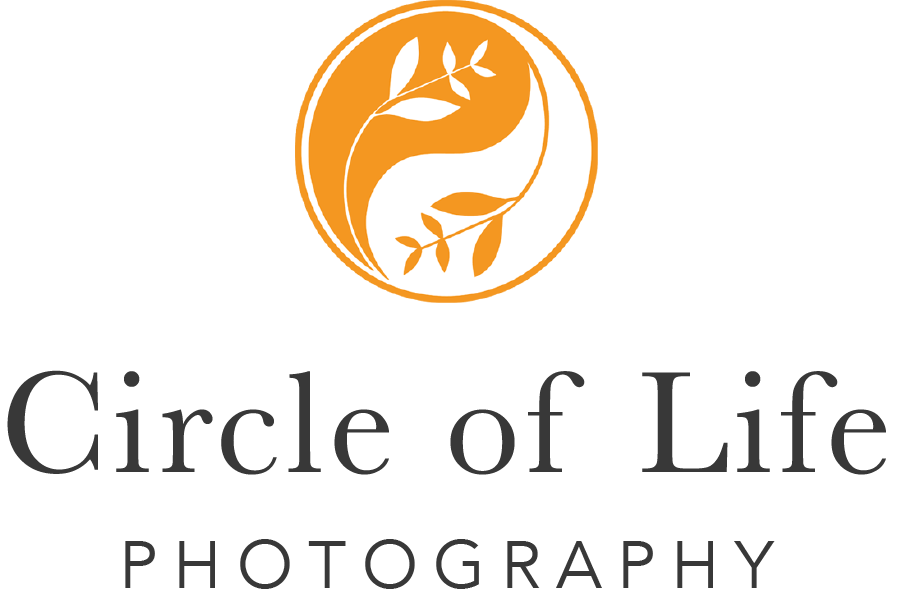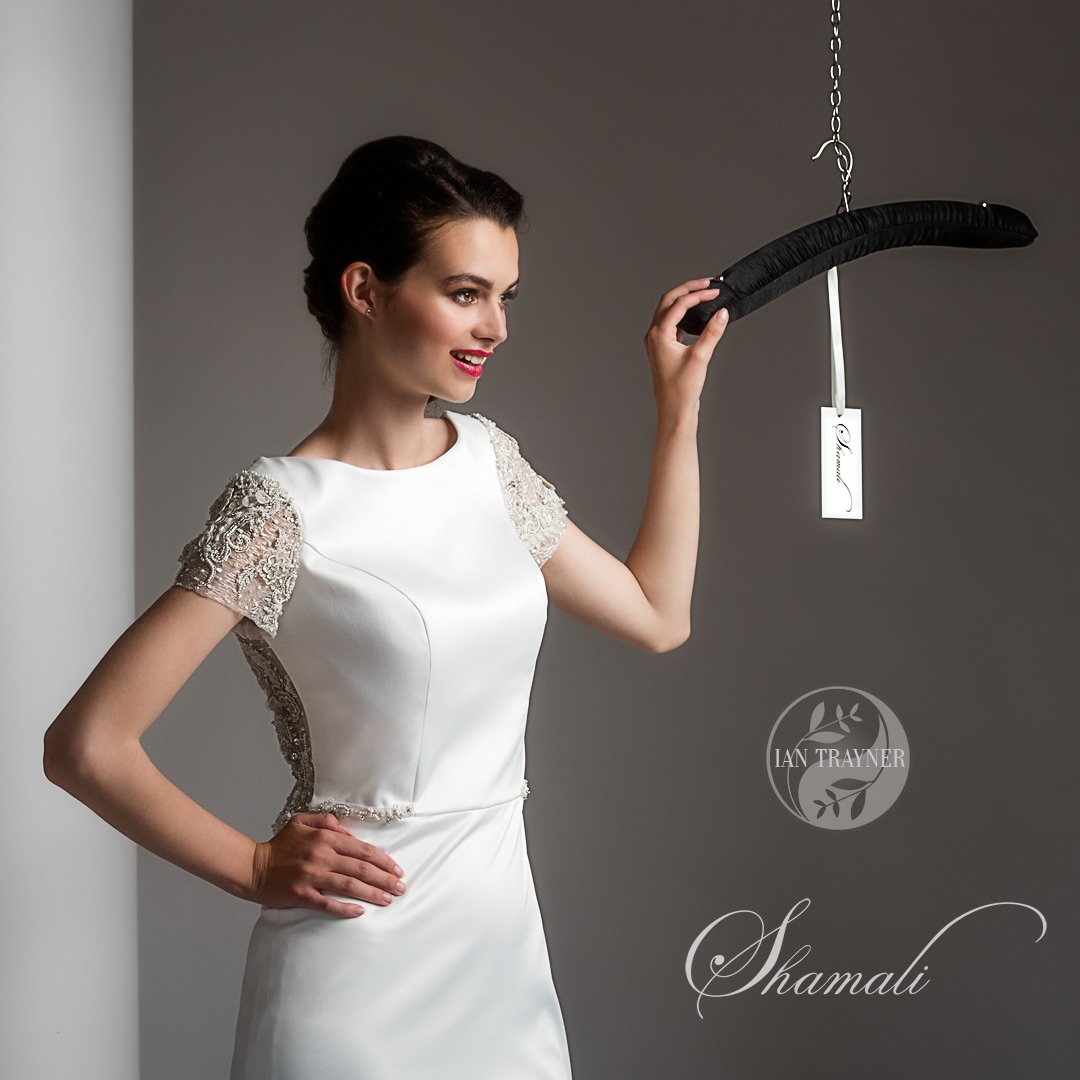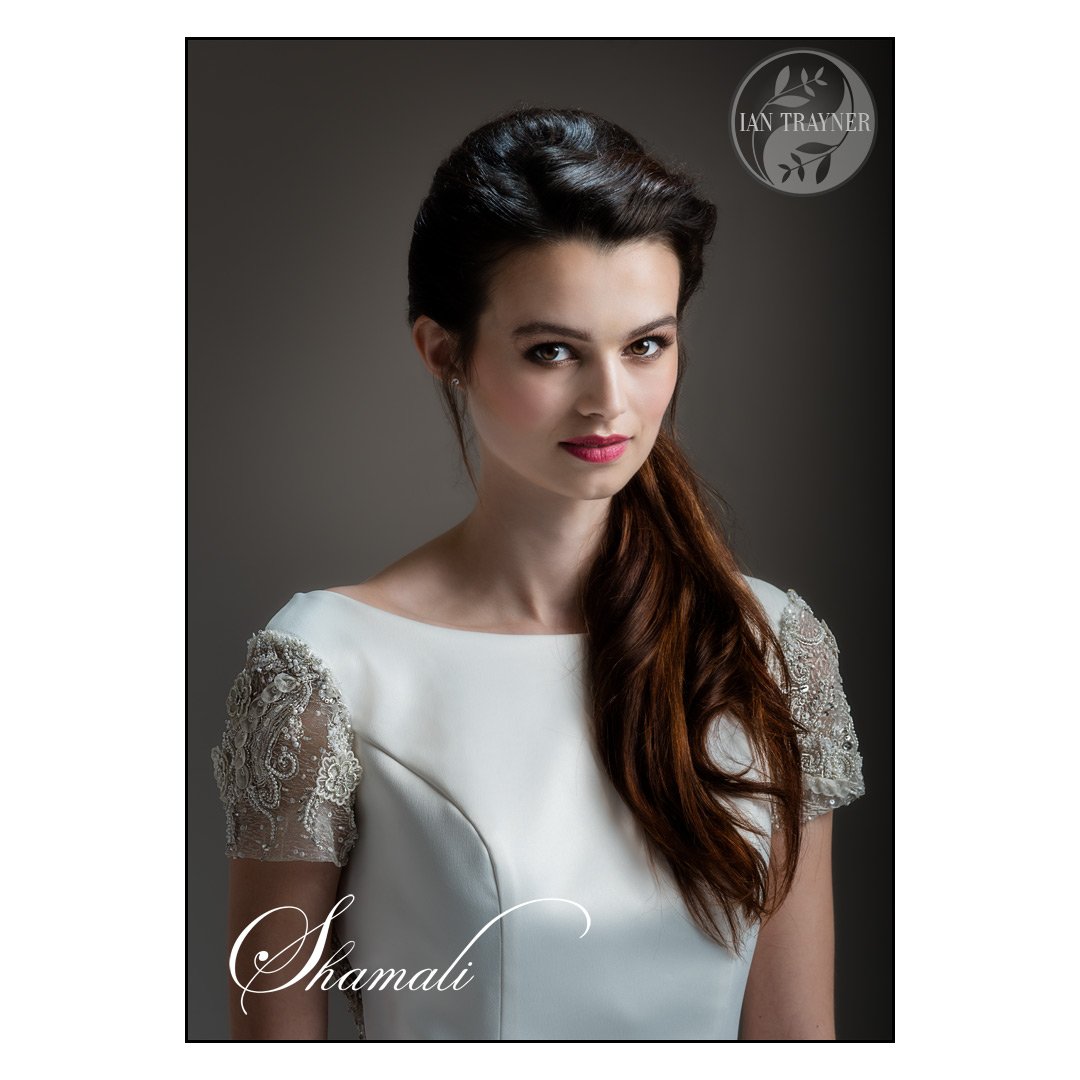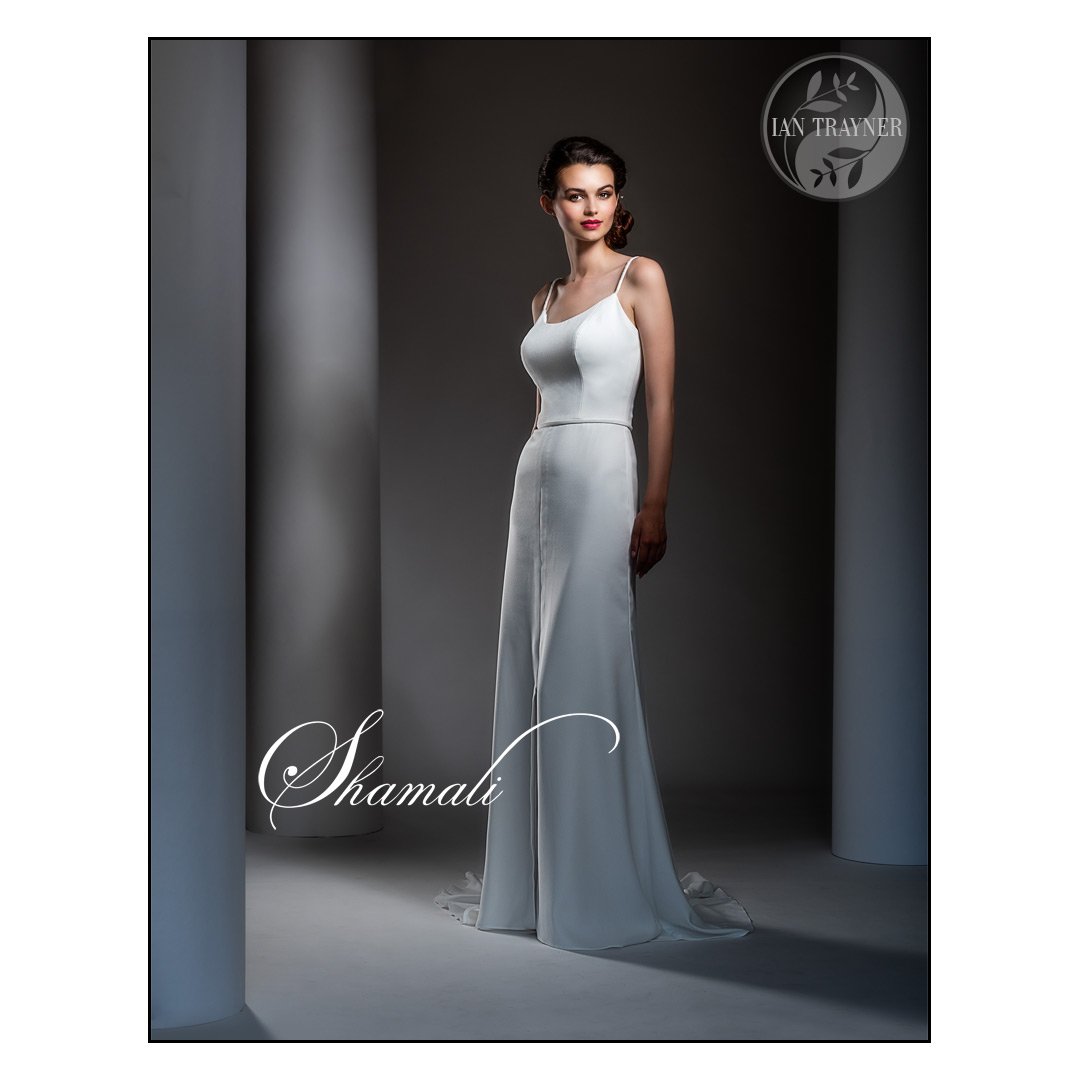Bridal gown photo shoot for Shamali
Shamali wanted a “wow” image to show off a bridal gown from her new collection, and she commissioned me to create it.
“Shamali is an exclusive range of high quality bridal gowns to suit every shape and personality. The collections are all designed exclusively by Shamali and hand finished in England”.
Commercial photography
Although I am primarily a family portrait photographer, I also do some fashion and commercial work. I have had the privilge of photographing Shamali’s bridal gowns for a number of years. This summer (2018) Shamali asked me to create a single “wow image” for promotional purposes. She also wanted me to take some additional bridal gown images for her website and catalogue.
Photographing bridal gowns in a relatively confined space
Shamali decided we would do the photo shoot in her shop. This is very convenient because all her bridal gowns are already there, as well as other props. Of course I have to bring my lights and photography equipment! However the space is relatively confined as far as photography studios go. You can Google “Daisy’s Bridal Couture” and have a look at the front of the shop in Google’s streetview to see what I mean.
I always enjoy visiting Shamali’s shop because of the calm atmosphere, and the warmth and friendliness of Shamali and her staff.
The first challenge – creating the set
My first challenge was to design a photography set that looked elegant, and was suitable for photographing bridal gowns. You can see the set I came up with, but I shall keep how I made it a trade secret!
The second challenge – “going the distance”
In order to photograph a model full length without distorting her body, it is necessary to place the camera at some distance from the model and use a long lens. The model will then appear to have normal proportions. In contrast, if the photograph is taken close to the model using a wide angle lens, we may find we are looking up at the face of the model, and down at the top of her feet, with her legs foreshortened. This is not at all flattering. The resulting images exaggerate the size of the torso, and “shrinks” the model’s legs. So for fashion photography usually one wants to get a good distance away from the model and use a relatively long lens. For a full frame (35mm) chip camera, lenses with a focal lenth of 100m or longer would be good.
And that brings me to my second challenge – how to get far enough away from the model? The solution was to place the camera on the pavement outside the shop and shoot through the doorway.
The creative team
Shamali provided the bridal gowns, shoes and hair jewellery. She also provided the “studio space” in the form of her shop, Daisy’s Bridal Couture.
The model for this photo shoot was Olivia Dunn.
Kirsty Cox did Olivia’s hair and make up. I have worked with Kirsty a number of times, and I can recommend her professionalism, and the quality of her work. I have included a couple of head shots to show the quality of her work.
How did I light the “wow” bridal gown image?
I used two lights.
The main light is from a white 55cm beauty dish, fitted with a grid, from Viewfinder.
The rim light caressing Olivia from behind was provided by a tall slim softbox. But a similar effect could have been attained using a variety of lighting modifiers.
The studio set is all white. The background is white, and the columns are white. Areas appear dark because there is little light shining on them. This is an important principle; control of shadows and control of light are two sides of the same coin – and equally important as each other. That is my (allegedly humble) opinion!













